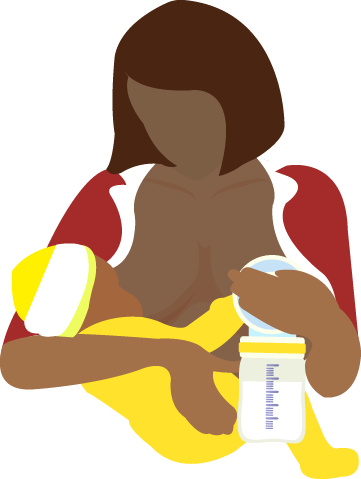Your baby should nurse long enough to get a good flow of milk and to be full. In the beginning of the feeding, the milk is more watery. This satisfies the baby’s thirst. As nursing continues, the amount of fat increases. The high fat milk at the end of the feeding is called hind milk. Allow your baby to nurse for as long as he wants (at least 15 minutes) on the first breast so the baby empties the breast and receives the hind milk.
When your baby has had enough he will let go of the breast and seem satisfied. Try burping or changing your baby’s diaper and then offer the second breast. If your baby is still hungry, he will continue to feed on the second breast.
Make sure to alternate the side you start with because the baby’s suck is always stronger at the beginning of the feeding.
Growth spurts
At around 2 weeks, 6 weeks and 3 months, your baby may have a growth spurt. He will want to breastfeed every 1 to 1½ hours for a day or two. Remember this is your baby’s way of increasing your milk supply. Allow your baby to breastfeed as often as he wants during these days and you will make enough milk in a day or two.
Breastfeeding can be a rewarding and loving experience for both you and your baby. You can feel proud that you are providing your baby with the start to a healthier life.
Call your pediatrician or obstetrician if:
You think your baby is not getting enough milk.
You notice a white coating that does not come off your baby’s tongue and cheek.
You notice your baby has a yellow coloring to the skin and in the white part of the eyes. This could be signs of jaundice.
You have sudden onset of flu-like symptoms, pain in the breast, and a fever.
Contact your local nursing mothers group or La Leche League if you experience any of the following:
Difficulty latching on
Engorgement
Sore or cracked nipples
Flat or inverted nipples
Sore breasts or lumps in breast without fever
Source: Children’s Hospital of Philadelphia
Link: https://www.chop.edu/pages/breastfeeding-tips-beginners




